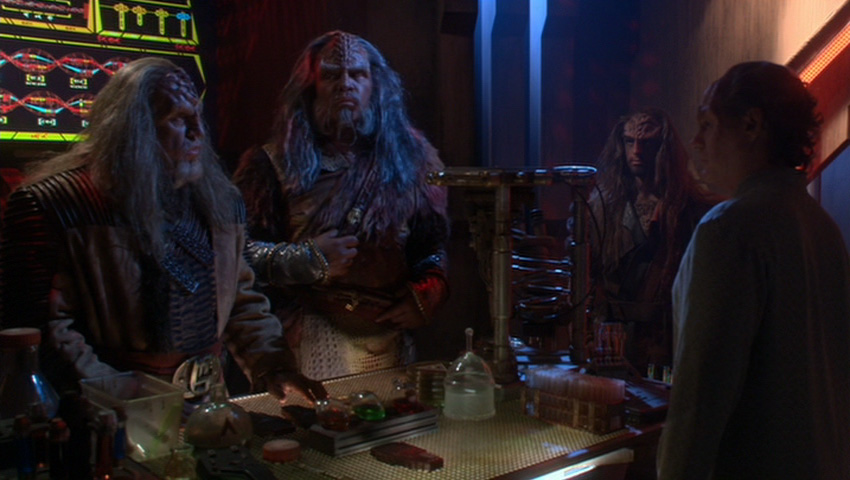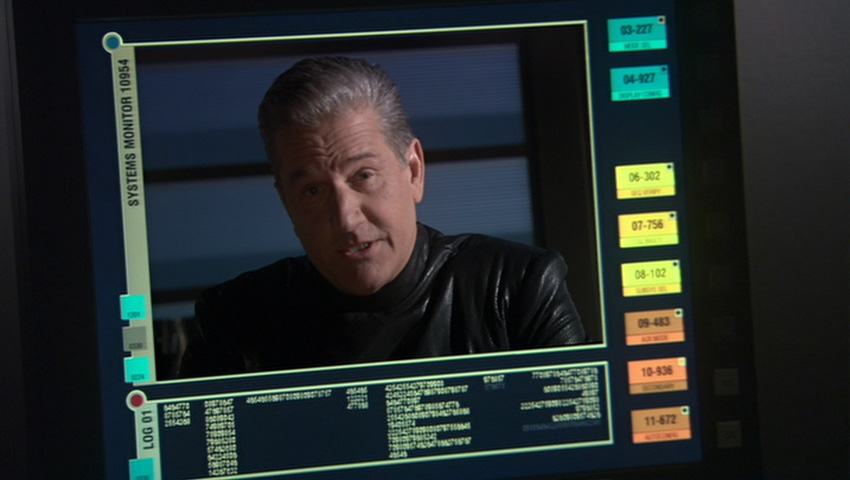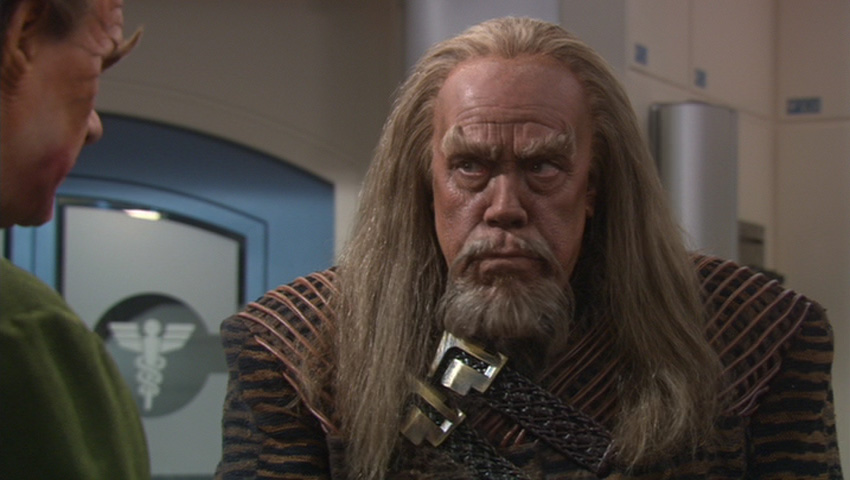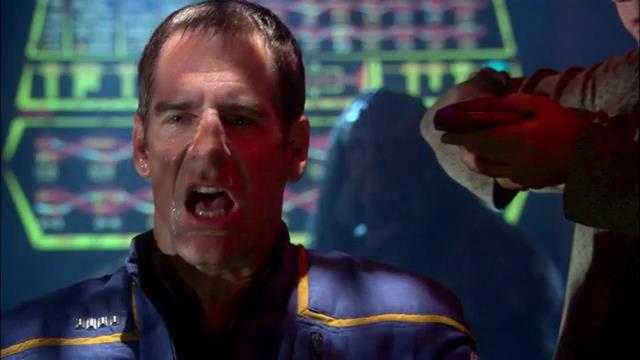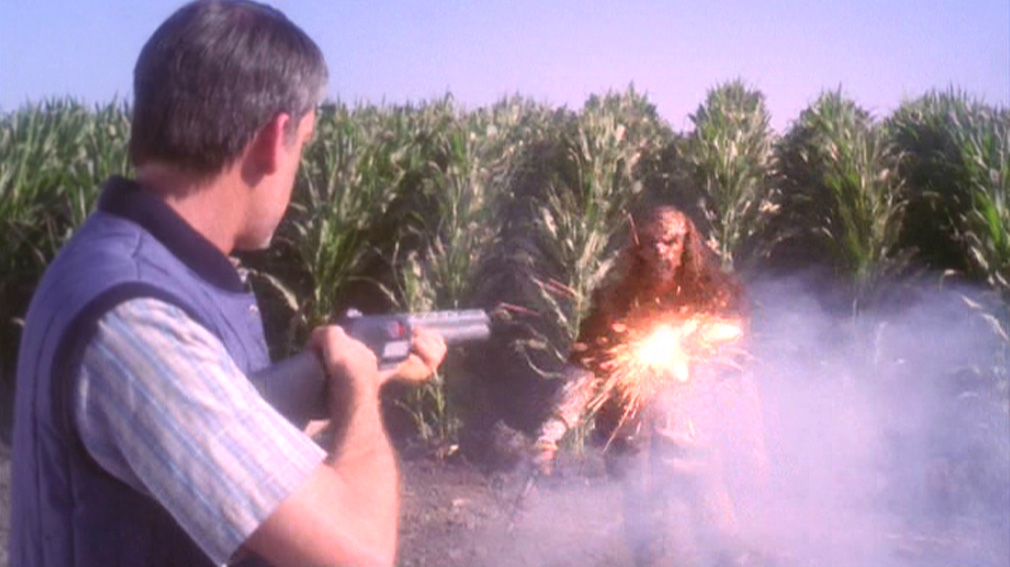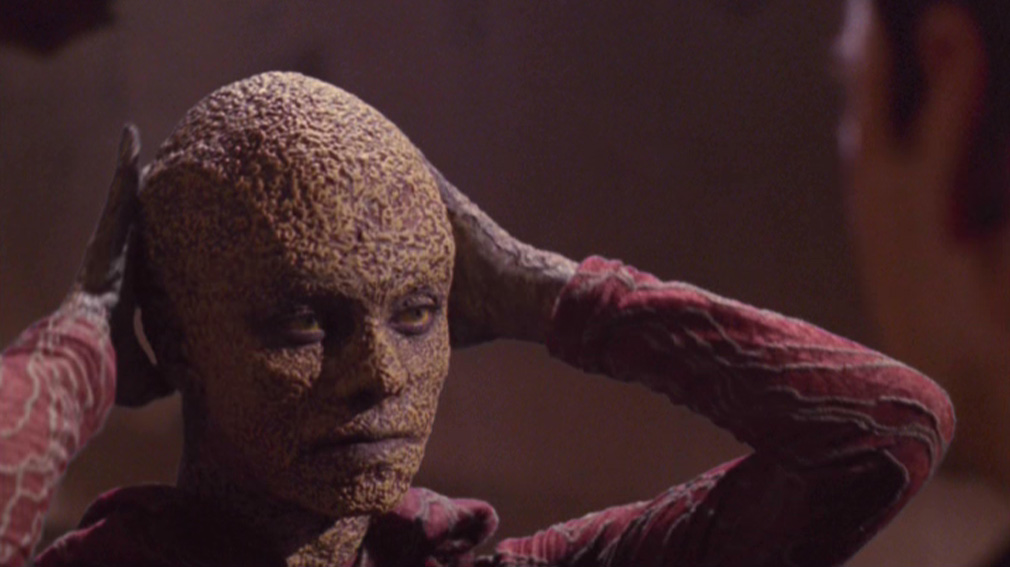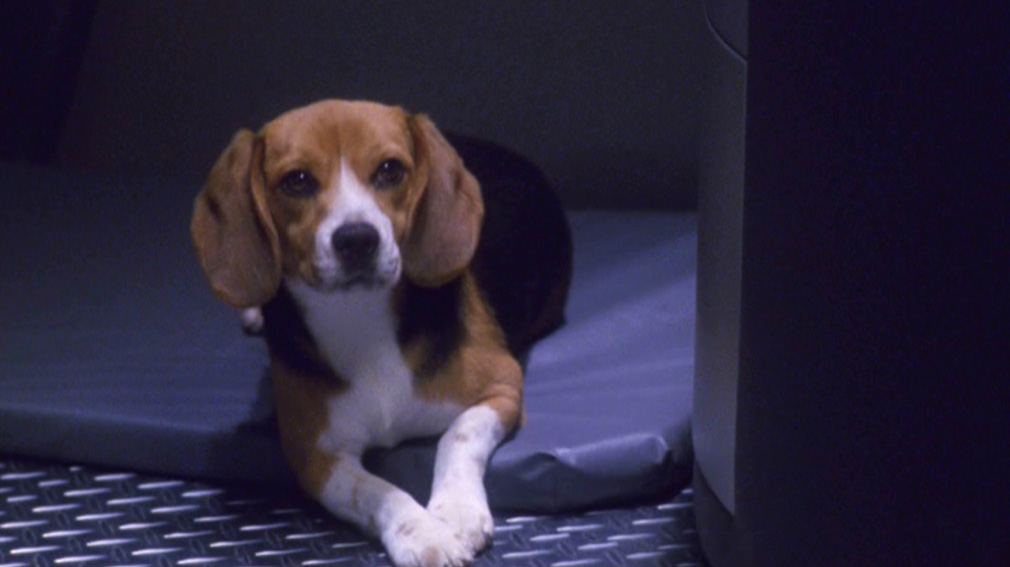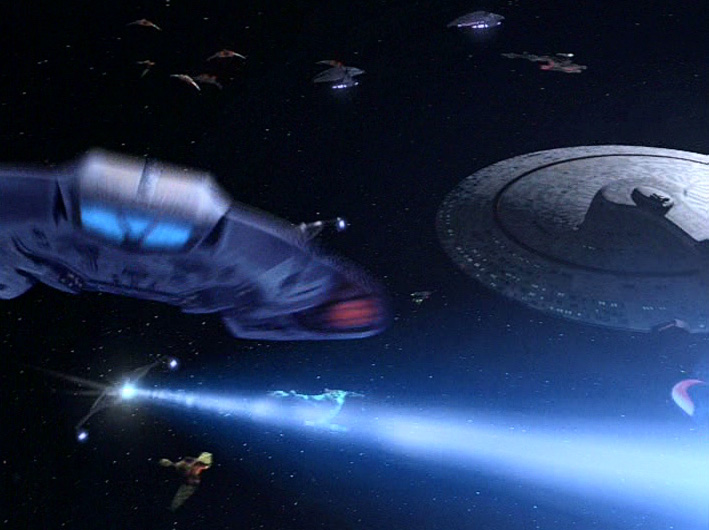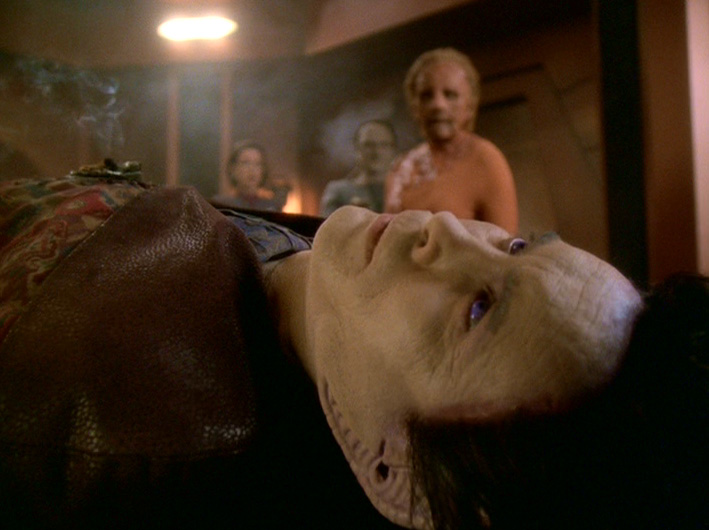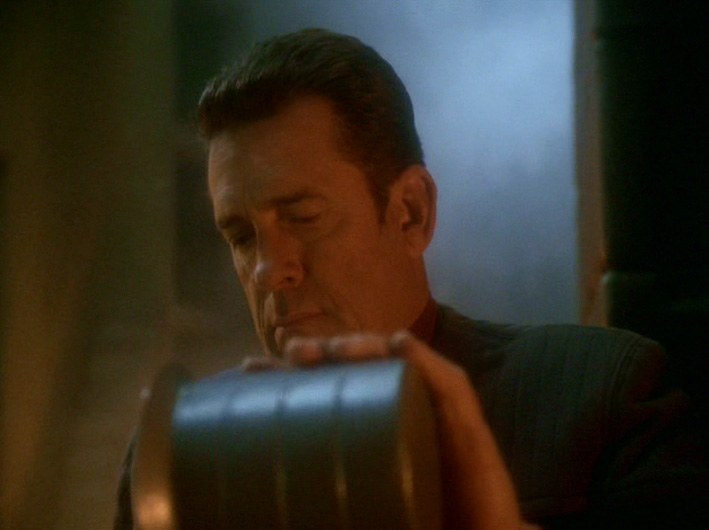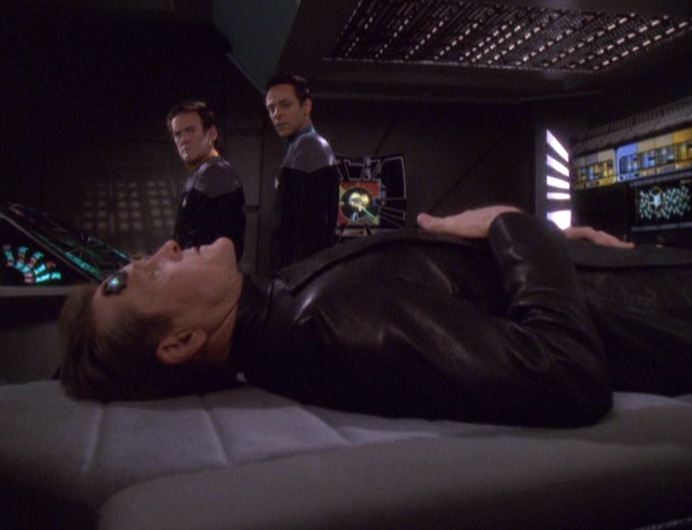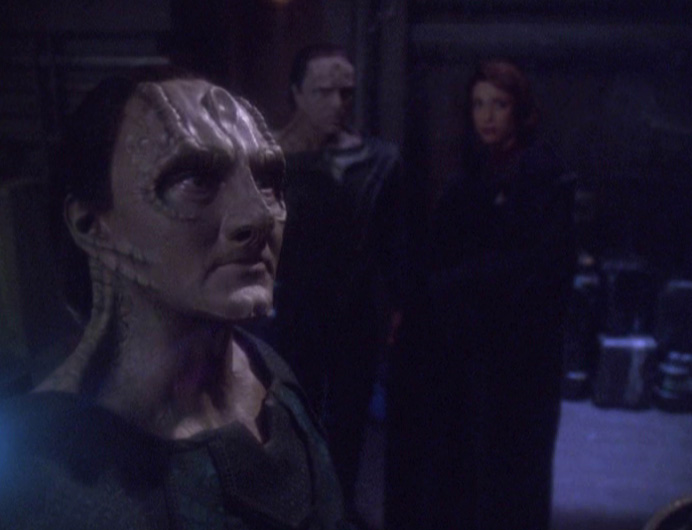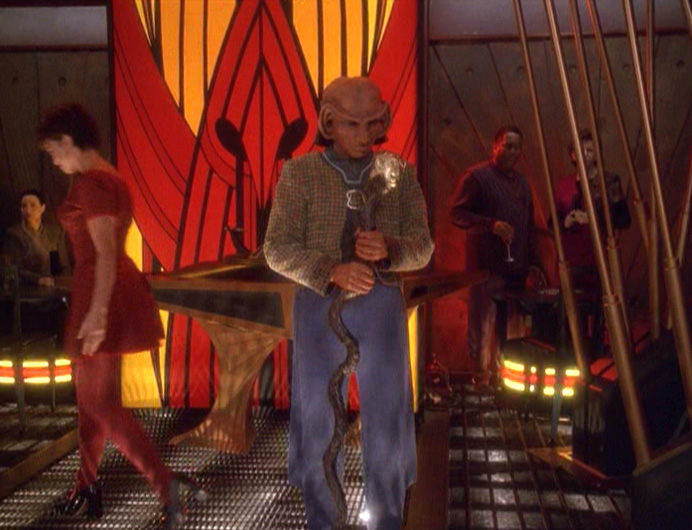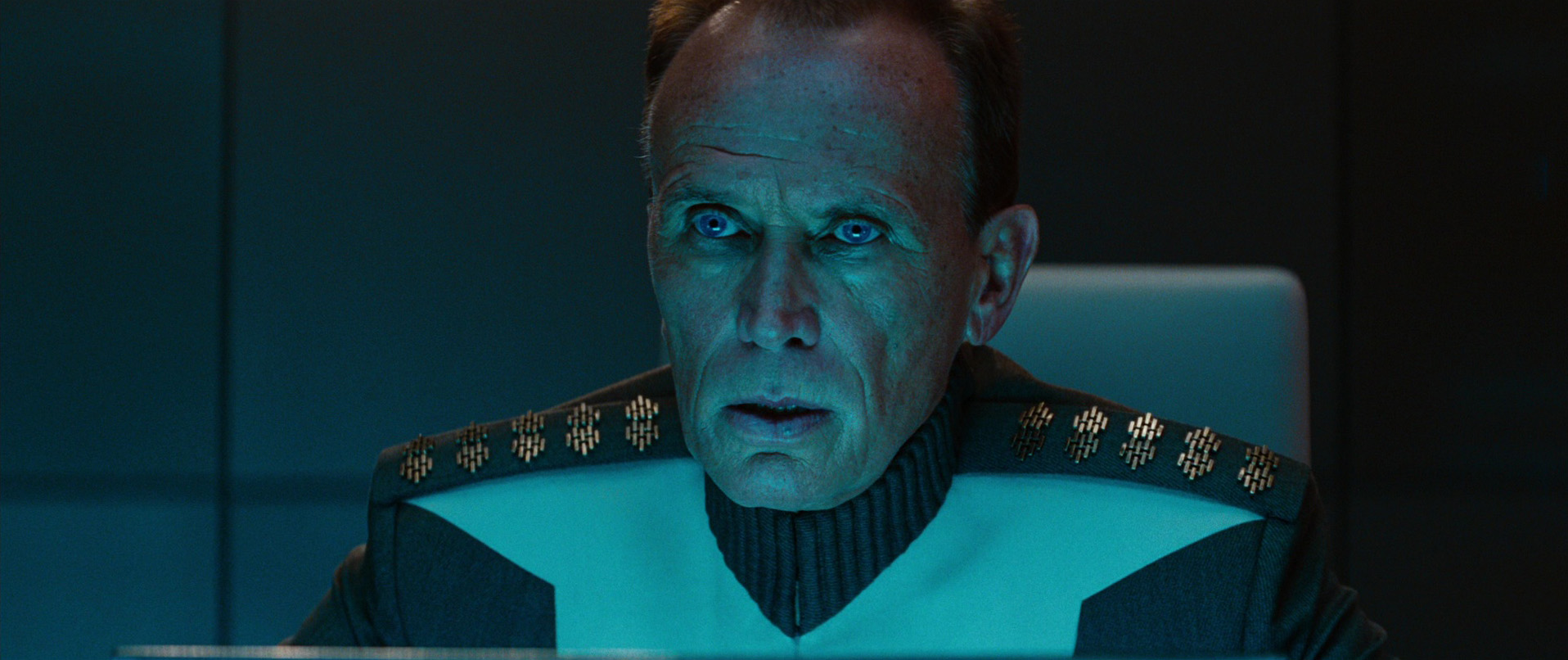
Kirk’s being all Kirk and violating the Prime Directive (some things are constant, despite reboots). Starfleet gets pissed and demotes him to commander and gives the Enterprise back to Pike. At about the same time, a Starfleet installation in London is bombed, thanks to a shady-looking character who seems well-suited to solving 19th-century mysteries (Benedict Cumberbatch). Turns out the bombing was a ploy (or something) to get all of Starfleet’s top dogs in one place so the shady-looking character (identified as Commander John Harrison) can attack the meeting room. Pike and others are killed, Kirk eventually thwarts the attack but Harrison escapes. Harrison apparently used Scotty’s transwarp beaming technique (seen in the previous movie) to get to the Klingon homeworld. Kirk convinces Starfleet Admiral Marcus (Peter Weller) to give him back the Enterprise to pursue Harrison, and Marcus gives Kirk some super-duper torpedoes to attack Harrison’s position on Kronos. Spock objects to the out-and-out assassination, and Kirk eventually decides to try to apprehend Harrison instead. After a short battle with some Klingons, in which Harrison kicks some major ass, he learns about the number of torpedoes the Enterprise is carrying and surrenders.
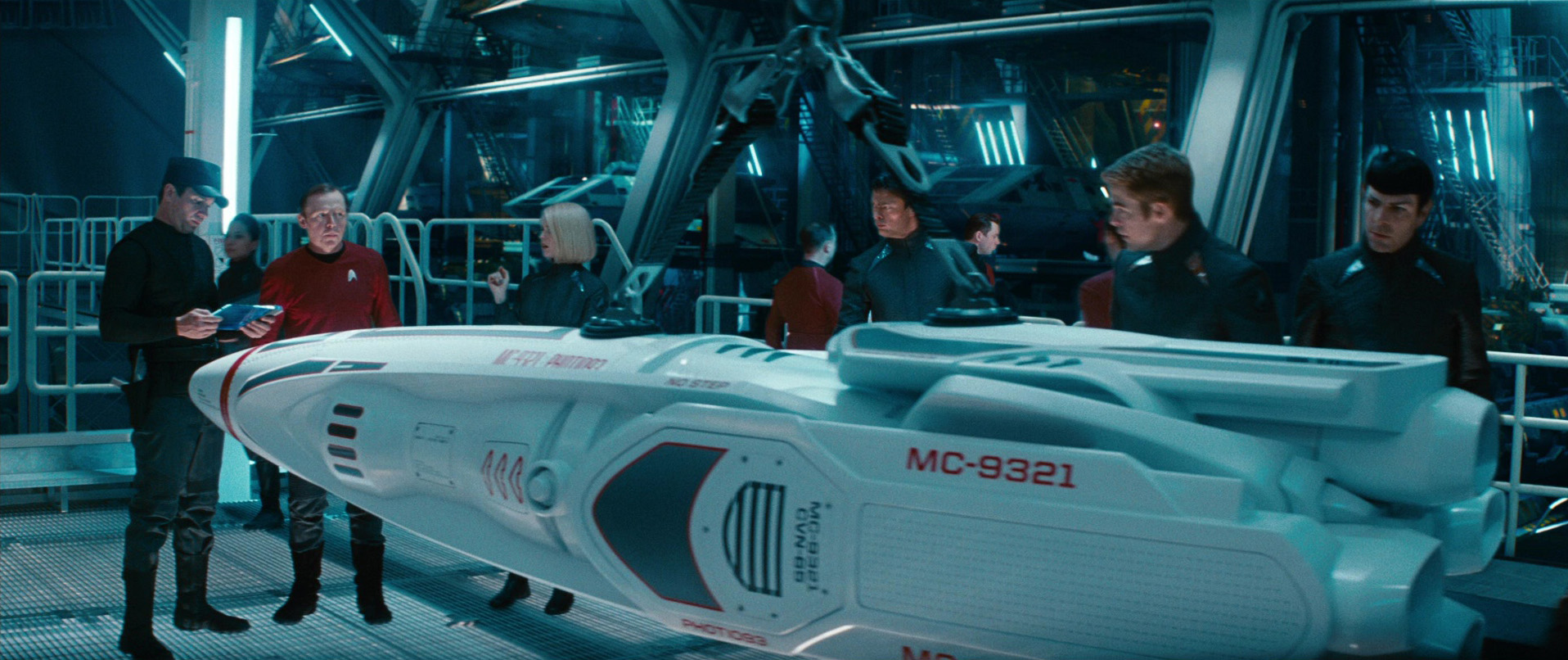
Turns out, Harrison is actually Khan Noonien Singh (shocking no one) and, after Marcus discovered him (presumably on his sleeper ship) he helped Marcus design the torpedoes and stashed his 72 genetically engineered buddies inside them. Meanwhile, the Enterprise is having engine problems and is unable to leave Klingon space. Marcus shows up in what amounts to a Starfleet warship — apparently, developed in secret by Marcus with Khan’s help — and demands Kirk turn over Khan. Kirk, realizing that Marcus is operating without authorization, refuses and sets course for Earth to put Khan on trial. Marcus attacks, pulling the Enterprise out of warp, and Kirk and Khan board Marcus’ ship (with stowaway Scotty’s help) to prevent further attacks.
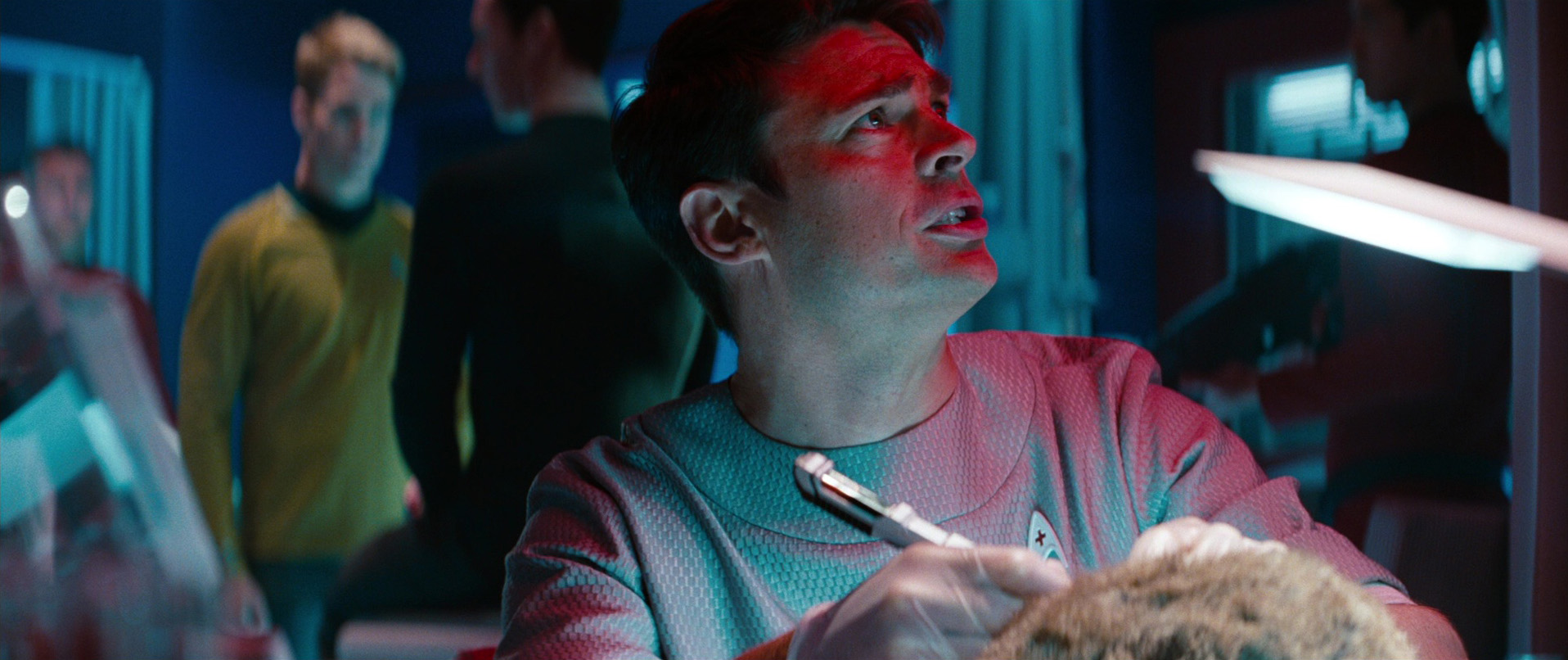
They stop Marcus (Khan kills him) but Khan takes control of Marcus’ ship, demanding that Spock turn over the torpedoes. He does so, but arms them — after removing Khan’s people — and Marcus’ ship crash lands on Earth. Meanwhile, Kirk sacrifices himself to save the Enterprise from burning up in Earth’s atmosphere. An enraged Spock (hmmm) pursues Khan and eventually stops him with Uhura’s help — and McCoy uses a blood transfusion from Khan to save Kirk (hmmm, again). Khan is put into stasis with the rest of his people and Kirk and Co. embark on a 5-year mission … to explore strange new worlds.
Why it’s important
Well, Kirk and Co. stave off a Starfleet takeover by Marcus (one that stems from his paranoia following the destruction of Vulcan) and stop Khan from doing … whatever he would have done had he freed his genetically engineered posse. Of course, Kirk goes from goat to hero again — echoing a theme from the previous movie — and his heroism eventually leads to the Enterprise being sent on the first of Starfleet’s 5-year missions.
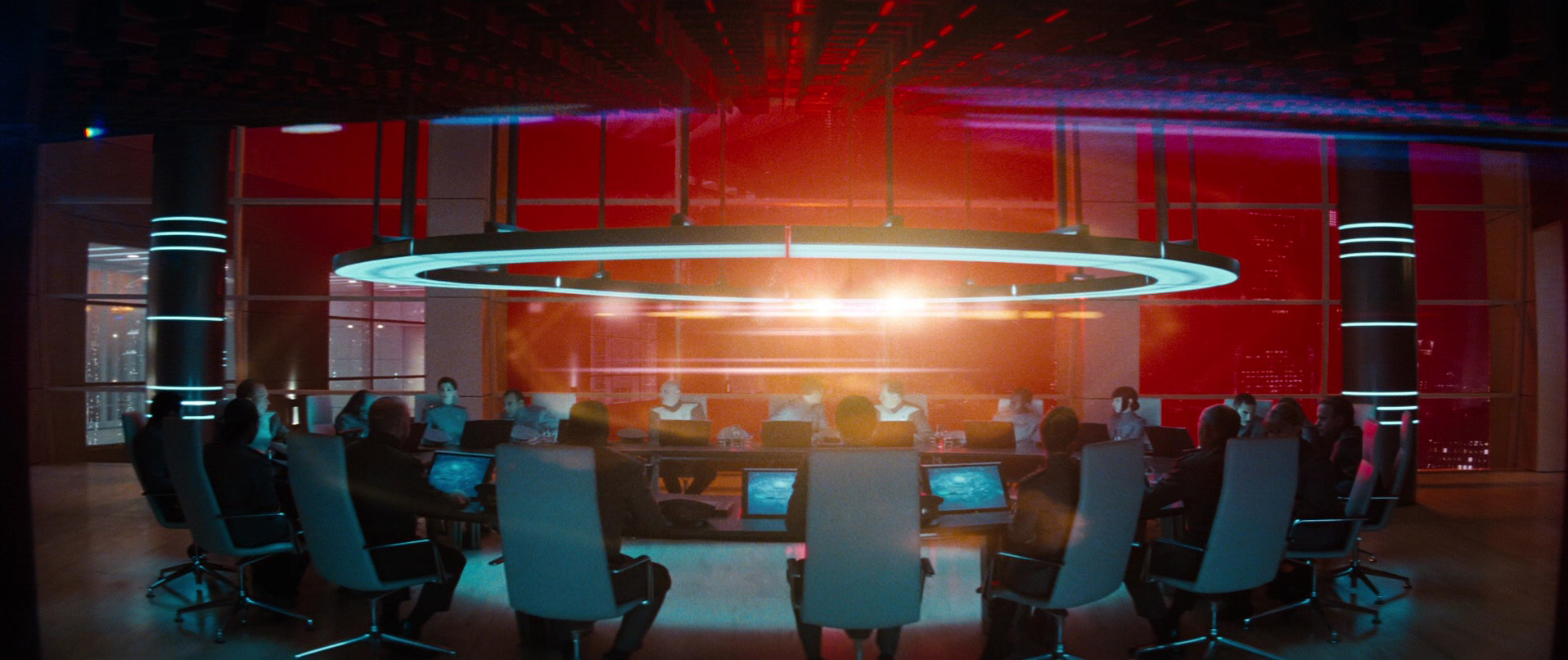
What doesn’t hold up
Get comfortable.
In our review of the previous film, we noted that its biggest flaws stemmed from bad logic and action-movie cliches. Still, the 2009 movie was a good one, in our eyes.
The opposite is true for this movie. The action-movie cliches and bad logic overwhelm the good.
The first quarter of the movie is mostly OK. The fact that a “cold fusion device” freezes a volcano in the movie’s opening scene is kinda dumb, but whatever. The stuff with Kirk and Pike — further establishing their relationship in one of the highlights of the reboot — was good. Chris Pine and Bruce Greenwood bring their A games (though Kirk is cavalier even for Kirk considering he falsified reports). The problems start around the time Kirk gets the Enterprise back to hunt for Harrison/Khan.
The first issue, and probably the film’s worst, is how the Enterprise is hanging in Klingon space for the better part of a day without any sort of response. True, the Klingons attack Kirk’s party on the planet, but the fact that the Enterprise (and, then, Marcus’ ship) are there and we see nothing from the Klingons is just, well, laughable. For all the talk of hostilities with the Klingons gearing up, this is just a ridiculous oversight. Even if the Enterprise and Marcus’ ship hid effectively — there’s no dialogue indicating that they took special measures — wouldn’t the fact that humans clearly attacked the Klingon homeworld get the Klingons to declare war?
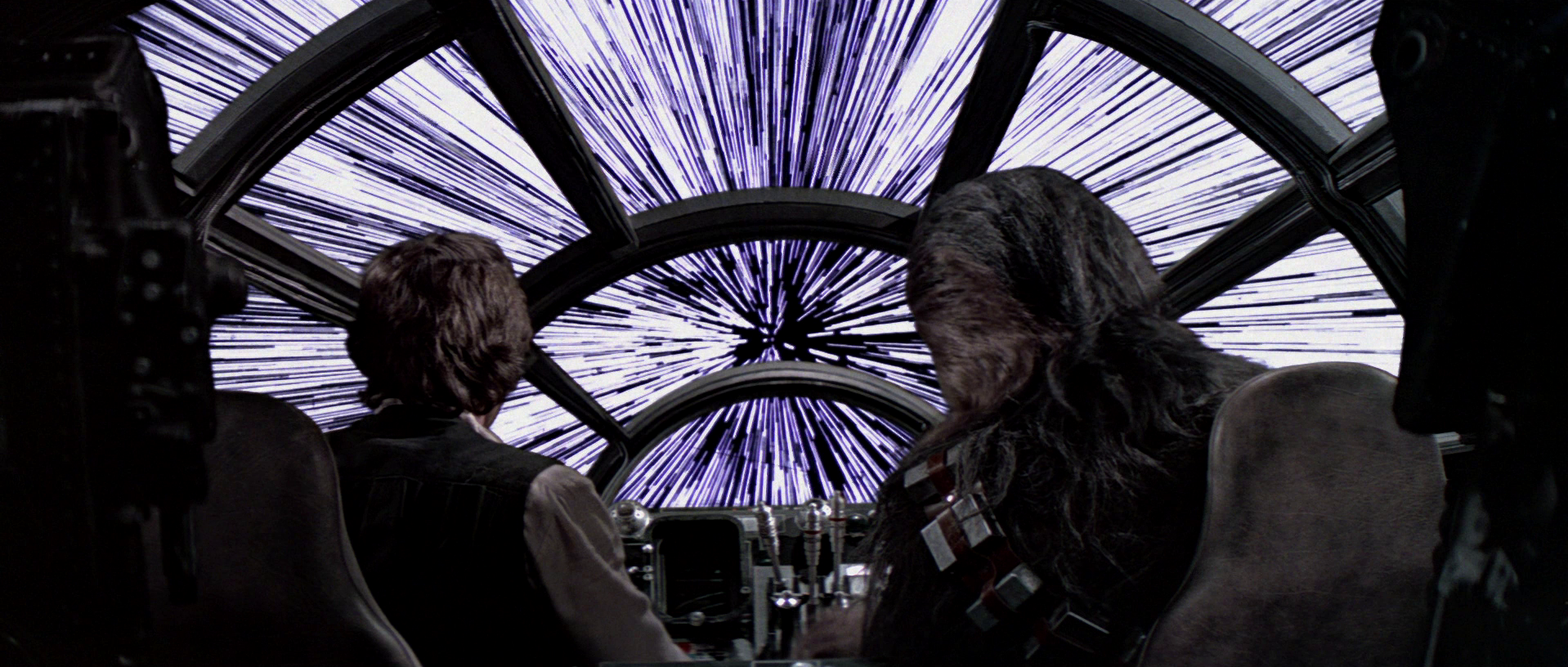
There’s also the matter of how warp is different in the rebooted films. Throughout prime Star Trek, warp was something that allowed ships to move fast, but not cross vast distances in mere moments. This was sort of an issue in the previous movie, but it really seems off here, when getting from Kronos to Earth seemingly takes minutes. Of all the creative choices in the reboots, this is my least favorite. It makes Trek more like Star Wars, and it’s not a choice that strengthens the films.
There’s also the issue of Khan’s people being in the torpedoes Marcus gives Kirk to use on Khan. Simply put, this doesn’t make any sense — unless Marcus was unaware, and it seems like he knew. Why not provide the Enterprise with the heavy-duty torpedoes without Khan’s people inside them? Without their presence, Khan likely wouldn’t have (temporarily) helped Kirk and foiled Marcus’ plan.
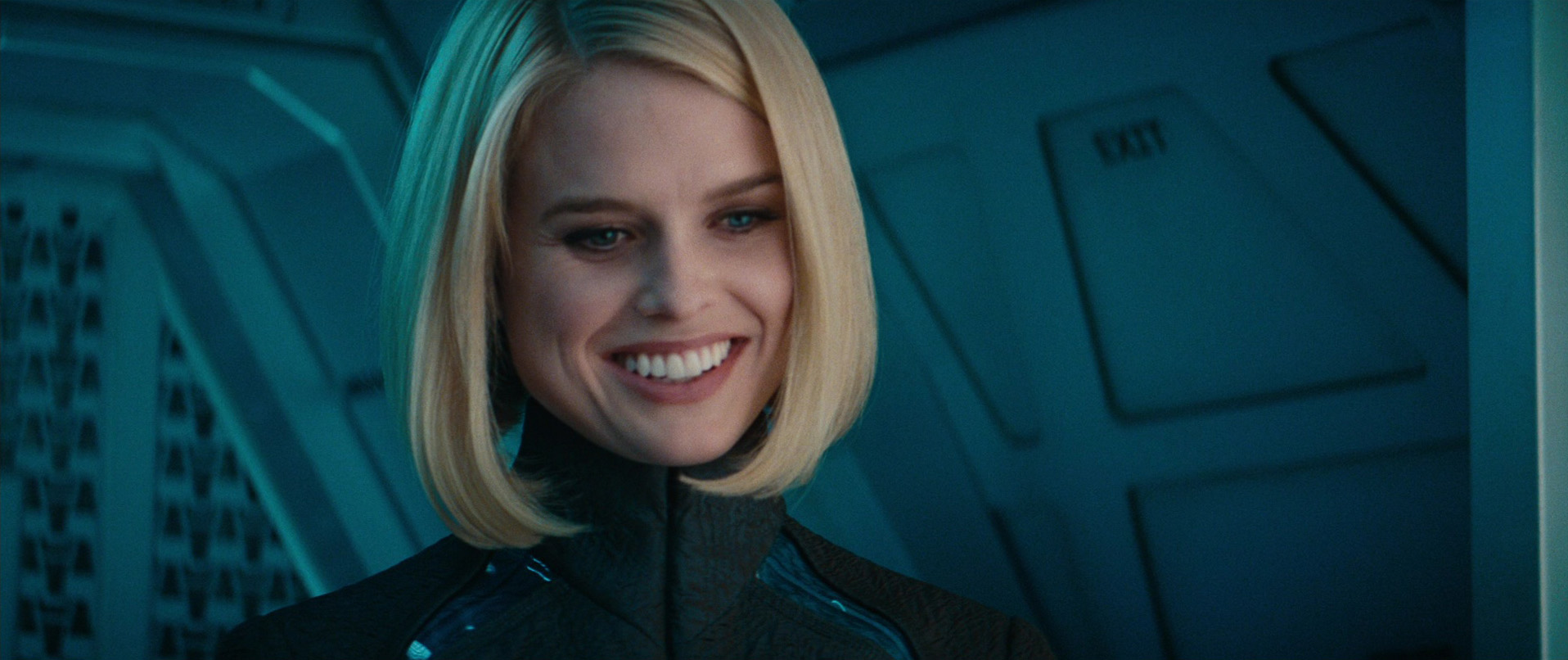
There’s also the matter of Carol Marcus (Alice Eve) a Starfleet officer (breaking from the previous timeline) and the admiral’s daughter who boards the Enterprise to (I guess?) stop the use of the torpedoes before they leave Earth. But, how would she even know about them — or about what her father was doing at that particular time? And how easy is it for just anyone (even an extremely attractive anyone) to get onto Starfleet’s most advanced ship without orders? Frankly, Carol Marcus’ presence seems needless and an excuse to have a hot blond in Kirk’s orbit who is also a callback to the original movies. The underwear scene, really, was completely unnecessary.
There are also some weird lines of dialog between Kirk and McCoy about Kirk apparently having health problems. This happens right after Pike’s death, so it at first seems that McCoy is checking out how his friend is dealing with the tragedy. But McCoy says that Kirk’s “vitals are all over the place” right after they board the Enterprise. Was something cut from the film? Was that foreshadowing for the next movie?
Also, the whole matter with Spock beaming to Earth to stop Khan makes very little sense. Even putting aside Spock’s over-the-top emotions, why wouldn’t he bring a security squad along? The day is saved when Uhura beams down and helps bring Khan in … but why didn’t Spock take more people to begin with?
There’s also the ridiculous lack of security allowing Scotty to infiltrate Marcus’ ship. Even if we figure Scotty is an engineering genius, there’s just no way that a secure installation (in the Terran System) would not notice his shuttle. Hell, how did Scotty get a shuttle in the first place?
Oh, and where the hell is the rest of Starfleet as Marcus’ ship attacks the Enterprise? This is an ongoing problem in Star Trek (as we’ve discussed) but it really stands out here. Even if you figure that Marcus has fooled or is controlling Starfleet, two massive ships attacking each other couldn’t go unnoticed. Granted, this isn’t just a problem with the rebooted movies, but it’s still a problem that could have been solved if the battle occurred in a more remote location before the two ships raced to Earth.
Finally, the bit about Khan’s blood having magical healing powers was just dumb — and if the powers were the result of his genetic enhancements, why didn’t McCoy just take a transfusion from one of the 72 other genetically enhanced people on the Enterprise?
I could keep going, but you get the idea.
Well, one more thing. The first movie’s reboot takes care a lot of the inconsistencies. But Khan, who was in power about 250 years before Nero’s ship destroyed the Kelvin, was not a British dude. He was Indian and had a very different personality than what we see here. Of course, Carol Marcus has become British in the J.J. verse, too …

Final thoughts
If you couldn’t tell, I didn’t care much for this movie. Looking past the logical/goofiness problems above the fan service is just too much. Spock yelling “Khaaaaan!” in a nod toward “Star Trek II: The Wrath of Khan” is the best example, because a more subtle recreation of Spock’s death in that movie (with Kirk dying this time) could have been done well. Instead, it’s heavy-handed and dumb.
There are some overly obvious moments, too, like Kirk just happening to notice McCoy injecting Khan’s blood into a dead Tribble (as a way to set up what happens later).
And there are weird timing and editing issues. Kirk tells Chekov to “put on a red shirt” and take over for a relieved-of-duty Scotty — apparently there are no other engineers on board — and within a minute or two, Chekov is in engineering in a red shirt. There’s also an odd scene where Spock asks Kirk to accompany him to Kronos only to have Kirk TELL Spock he wants him along a few minutes later.
Granted, there’s a LOT of plot in this movie, so some things needed to be cut. Of course with all the unnecessary running by main characters — seriously, can’t someone grab a communicator instead of sprinting to the bridge? — the pacing already felt rushed. And with scenes created almost specifically to be used in video games (Kirk and Khan’s spacesuit trip to Marcus’ ship, Spock’s pursuit of Khan on floating thingys on Earth) the action-movie nature of “Into Darkness” supersedes it’s good parts.
Coming next time …
That dude from “The Wire” shows up as Trek returns to theaters.

